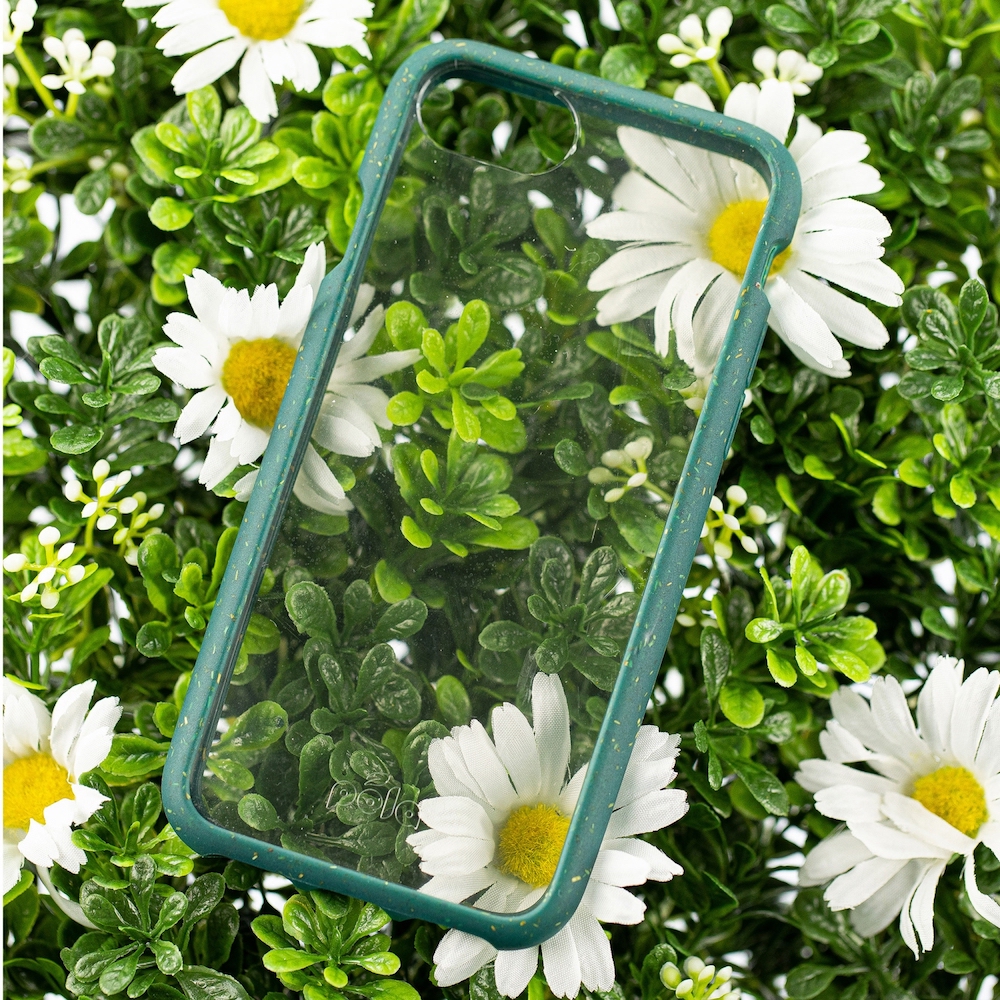
Eco-friendly phone cases are a great way to protect your smartphone and the planet at the same time. These sleek, stylish cases have just as much of a visual impact as they do an ecological one. The next time you’re due in for a new phone case—perhaps due to wear and tear or because you’ve just bought a new phone of a different size—check out what’s available in recycled, recyclable, compostable, and biodegradable materials to make a functional, thoughtful choice.
What are eco-friendly phone cases?
Eco-friendly phone cases are phone cases that are designed to minimize their environmental impact and carbon footprint. Different types of eco-friendly phone cases might be made from recycled plastic, compostable materials, or even plant-based alternatives, each of which approaches the case’s environmental footprint in unique ways.
Recycled plastic phone cases
One sustainable swap seen in phone cases is the use of recycled plastic instead of new plastic. Not only do these cases use less (or no) new materials, depending on their design, but Recycle Now states that producing them is also a less energy-intensive process than manufacturing from new. By using recycled plastics, we can actually reduce the carbon emissions used to create a product by as much as 80% according to a report from Imperial College London. These items are also more likely to be packaged in recycled materials, which is something additional that you can check for on a product page or on the packaging itself.

Compostable phone cases
Another great material swap is the use of compostable materials instead of plastics. Part of the waste problem from consumer products is that they sit in landfills for hundreds of years—if not more. By making products out of materials that will break down more quickly, we can reduce the strain on landfills and other waste sites. Biodegradable and compostable materials are often made from polymers of plants like wheat, corn, cassava, sugar cane, and beets, many of which are already being grown for other uses.
Instead of moulding phone cases out of plastics, which start as petroleum products and therefore have a proportionally large carbon footprint, manufacturers making compostable or biodegradable phone cases extract the glucose starches from these plants. (Yes, the same starches that give bread its fluffy, chewy texture.) From there, starch is fermented and treated to create long chain polymers, which are tough and flexible enough to be used in items like phone cases. This uses fewer carbon emissions during manufacturing and breaks down more quickly without intervention after disposal.
Biodegradable vs.compostable: What’s the difference?
So, what’s the difference between biodegradable and compostable phone cases—and how do you dispose of them to make an impact? Biodegradable and compostable materials are kind of a rectangle-square situation. All compostable phone cases are biodegradable, but not all biodegradable phone cases are compostable. The Center for Environmental Health states that both will break down more quickly than plastics by hundreds of years (and with no microplastic trace left behind), but compostable materials will break down much more quickly and can be disposed of at home. To get rid of a compostable phone case, all you need to do is bury it in your at-home backyard composter and wait about a year!
Biodegradable products break down more slowly than compostable ones, but they still break down without producing any harmful byproducts. Some biodegradable phone cases are made from things like long chain polymers, while others are made from natural, eco-friendly materials like cork, bamboo, and wood. These materials can be farmed sustainably with minimal environmental impact and will break down at home just fine.
Why choose an eco-friendly phone case
Phone cases made from recycled, recyclable, compostable, and biodegradable materials offer an option with a smaller carbon footprint. But why should you use a phone case in the first place? Phone cases are a great way to protect the investment that is your smartphone. Using a phone case and screen protector can help your phone last longer.
If we can take small steps to reduce how often we need to repair or replace high-carbon-footprint items like smartphones and tablets, we can reduce our lifetime carbon footprint. And hey, if we can do that using products that were made with even less of an enduring ecological impact, then even better!
How long will an eco-friendly phone case last?
Because there are so many different types of sustainable materials (and so many different manufacturing processes within each of those types), the answer to this question varies. On the whole, I find that you can expect an eco-friendly case to last for a similar amount of time as a traditional one, but there are some exceptions. According to Oceanworks, mechanically recycled plastics can have reduced impact resistance compared to new plastics, which can make them more likely to snap or break during a high-impact fall. Similarly, many manufacturers find that compostable phone cases just aren’t hard enough to hold up to normal wear and tear, which is why they opt to make biodegradable products instead.
When you’re choosing a new phone case, these are some great things to keep in mind—but they won’t always impact your product experience. Other than in extreme cases, most of us never use the full durability potential of our phone cases anyways. A few months off a multi-year lifespan won’t even register on the radar of the average consumer. However, making sustainable choices like opting for an eco-friendly phone case can help you reduce your carbon footprint and contribute to creating a better tomorrow.
Shop eco-friendly phone cases online at Best Buy.








































